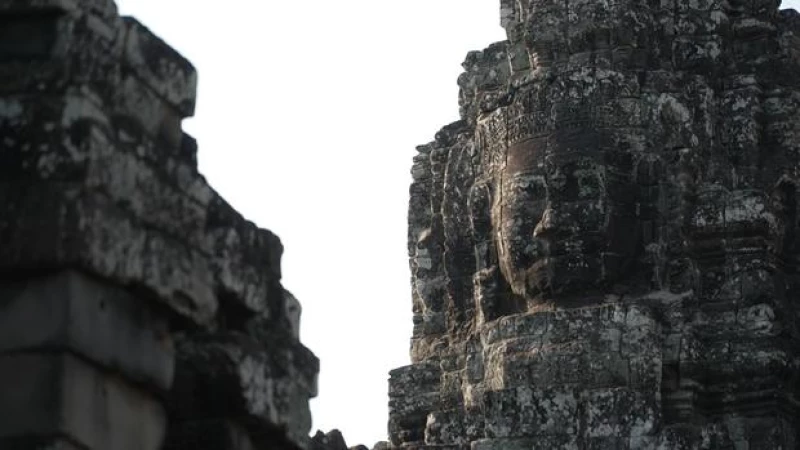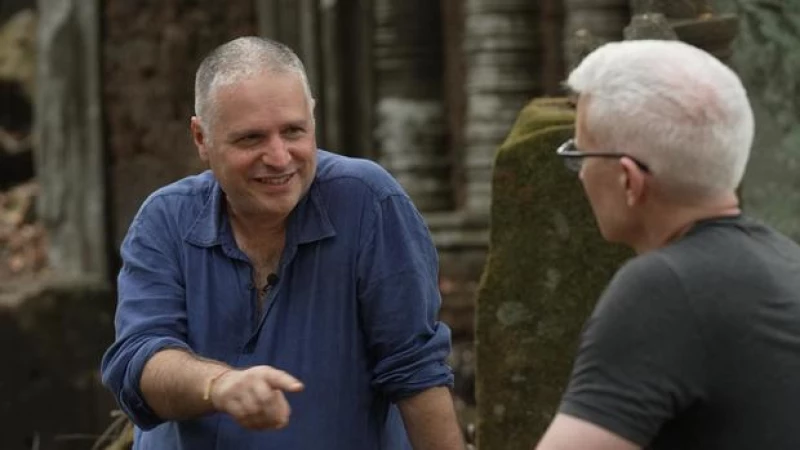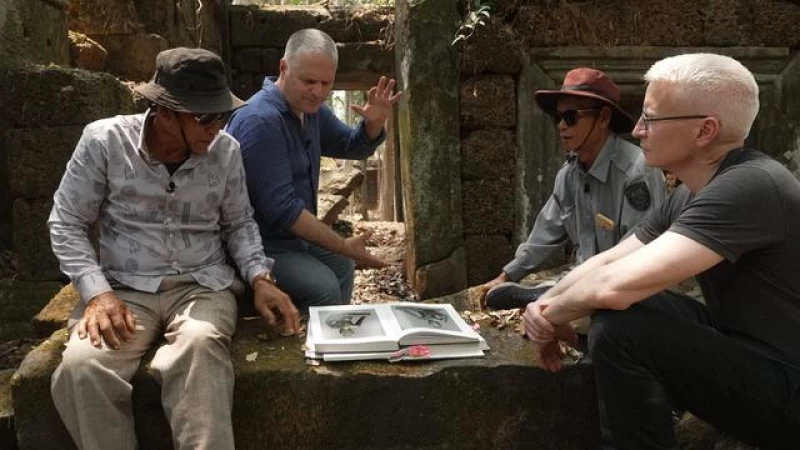A former looter turned confidential informant, weakened by cancer, witnessed the return of a stolen Cambodian statue just months before his death.
Toek Tik spent decades supplying antiquities dealer Douglas Latchford with thousands of looted artifacts. But the former looter, in a final act of redemption, joined forces with a team of Cambodian investigators, led by American lawyer Brad Gordon, who have been tracking down stolen treasures.
"He felt tremendously guilty about many things he had done in his life, about the killing, about the looting," Gordon said.
Scars of plunder in Cambodia
The theft of Cambodia's cultural treasures from religious sites across the country — thousands of sacred stone, bronze and gold artifacts — began a century ago when the country was colonized by France. The looting became a global business in the 1970s, '80s and '90s amidst genocide, civil war and political turmoil.
The genocide began in 1975 when the Khmer Rouge, a radical communist group, took over. Some two million Cambodians were slaughtered or starved to death.
Toek Tik was a child soldier of the Khmer Rouge, which lost power in 1979. Fighting and instability continued for decades, leaving the country's temples unprotected and vulnerable.
Temple Plunder in Cambodia
Nearly all of Cambodia's 4,000 temples have been plundered, including Angkor Wat, one of the biggest religious sites in the world.
For Cambodians, these are not just works of art – they are sacred deities that hold the souls of their ancestors, to whom they ask for guidance and pray.
Looters hacked the heads off many statues. They stole the bodies as well, leaving behind empty pedestals where gods and deities once stood. On some pedestals only the feet remain.
Who was Douglas Latchford
Cambodia's temples were easy targets for unscrupulous antiquities collectors. At the center of that shady world was the British dealer Douglas Latchford.
According to investigators, Latchford was the architect behind the large-scale looting in Cambodia. He kept some antiquities for himself, but he also sold them to wealthy private collectors and museums.
"I would say that he was, in many ways, the mastermind behind the greatest art heist in history," Gordon said.

Latchford portrayed himself as a scholar and protector of Cambodia's culture. He donated and sold sculptures to the Metropolitan Museum of Art in New York and other prestigious institutions. He published three books filled with the finest examples of Cambodian antiquities. Later, he was accused of stealing many of the same artifacts featured in his books.
Antiquities Dealer Indicted for Smuggling Artifacts
In 2011, an antiquities dealer came under the scrutiny of U.S. law enforcement after a 500-pound sandstone warrior from Koh Ker was discovered in a Sotheby's auction catalog.
Archaeologists quickly identified the statue as originating from a specific temple in Cambodia, leading to further investigation by a team from the U.S. Attorney's Office in the Southern District of New York.
Under the 1970 UNESCO Convention, member states are obligated to prevent the illegal import or export of cultural property and facilitate the return of such property to its country of origin upon request.
During the investigation, the original sale of the statue was traced back to the indicted antiquities dealer.
The U.S. attorney's case against the dealer was strengthened by the testimony of former looters who had participated in the removal of artifacts from Cambodia.
Although the dealer was indicted in 2019 on charges of smuggling, conspiracy, and wire fraud, he passed away before the trial could take place.
Stolen Cambodian antiquities still on display in museums
After negotiations with Gordon, the personal collection of stolen treasures belonging to Latchford was returned to his family. While some artifacts have been returned by museums, Cambodia is still working towards bringing more of its stolen antiquities back home.
The Metropolitan Museum of Art houses one of the world's most significant collections of Cambodian antiquities, many of which are believed to have been stolen by Latchford. Under pressure a decade ago, the Met did return two statues known as Kneeling Attendants, which had been donated to the museum by Latchford. This year, federal prosecutors in New York presented the Metropolitan Museum with a list of over a dozen Cambodian antiquities they claim were stolen.
Latchford had also donated and sold several other items to the Met. However, after the return of the Kneeling Attendants, a spokesperson for the Met stated in 2013 to the New York Times that there were no ongoing efforts to re-examine the provenance of those items.
Andrea Bayer, the deputy director for Collections and Administration at The Met, stated that after Latchford's indictment in 2019, the museum "immediately and proactively went to the U.S. Attorney's Office and offered our full cooperation."

In May, the museum announced the formation of a research team to investigate the provenance, or acquisition history, of all its collections.
"It was a slow process, I'll grant you that. It was a slow process, but I think that the fact that we are fully engaged now, fully cooperative now is our only answer to this really," Bayer said. "It's a moment of reckoning, and we're ready to do what it takes now to right whatever the wrong is."
She declined to specify if the museum would return all the pieces, but said The Met was on the verge of "returning a number of them."
The Met and the U.S. Attorney's Office reached an agreement for the voluntary return of 13 artifacts tied to Latchford, the Southern District of New York announced Friday. Those pieces are in the process of being turned over.
In addition to the 13 pieces being returned as part of the agreement with the U.S. Attorney's Office for the Southern District of New York, the museum is returning one other piece to Cambodia and two to Thailand, the Metropolitan Museum of Art said in a press release.
"The Met has been diligently working with Cambodia and the U.S. Attorney's Office for years to resolve questions regarding these works of art, and new information that arose from this process made it clear that we should initiate the return of this group of sculptures," Max Hollein, the Museum's director and CEO, said.
Cambodia's culture minister called the Met's announcement a "first step" and said she looks "forward to the return of many more of our treasures."
Returning stolen antiquities to Cambodia
Over 30 sculptures that were stolen are now being returned to Cambodia. The sculptures were discovered in 2008 when images were published in Architectural Digest of the Palm Beach mansion owned by the late billionaire George Lindemann and his wife Frayda. The couple had spent around $20 million on building their collection with the help of Latchford.
In September, the Lindemann family reached an agreement with federal authorities to voluntarily return 33 stolen treasures.
The family stated, "We were saddened to learn how these items made their way to the market in the United States, as we had purchased them from dealers that we assumed were reputable."
Frayda Lindemann declined an interview request.
The family's collection has been moved to a warehouse in upstate New York, where the gods and ancestors of a nation await their journey home.
Muikong Taing and Thyda Long, members of Gordon's investigative team, were present when the crates were opened at the warehouse. They were likely the first Cambodians in decades to lay eyes on the stolen antiquities.
"We always say, the gods want to come home," Gordon said. "We feel like the gods have spoken today. They want to come home."







